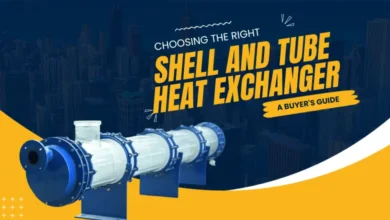
Introduction of Scroll Compressor
A scroll compressor is a type of positive displacement compressor that operates by compressing gas or air between two spiral-shaped scrolls or involute shapes. It is also known as a spiral compressor or scroll pump.
The compressor works by the principle of moving gas from the outer edge of the scrolls towards the center, where the volume is gradually reduced. The gas is then compressed and discharged from the center of the scrolls.
One of the main advantages of a scroll compressor is its high energy efficiency. They operate with minimal vibration, noise, and pulsation, and can achieve higher compression ratios than other types of compressors. Scroll compressors are commonly used in HVAC systems, refrigeration, and air compression applications.
Overall, the design of the scroll compressor allows for a reliable and efficient compression process, making it a popular choice in various industries.
Design of Scroll Compressors
The design of scroll compressors consists of two main components: a fixed scroll and an orbiting scroll. The fixed scroll is stationary and has a spiral-shaped profile. The orbiting scroll has a similar spiral-shaped profile but rotates around the fixed scroll.
The spiral profiles of the two scrolls are designed in such a way that they fit together perfectly and create a series of crescent-shaped pockets or chambers between them. As the orbiting scroll moves around the fixed scroll, the volume of the crescent-shaped chambers decreases, thereby compressing the gas or air trapped inside them.
The movement of the orbiting scroll is made possible by an eccentric drive mechanism that connects it to the motor. The motor drives the eccentric mechanism, causing the orbiting scroll to move in a circular motion around the fixed scroll.
The compressed gas or air is then discharged from the center of the scrolls through a discharge port, while new gas or air is drawn into the outer edges of the scrolls through an intake port.
The design of the scroll compressor results in a continuous and smooth compression process, without any pulsations or surges. It also ensures minimal noise and vibration during operation, making it a popular choice in various applications.
Advantages of Using Scroll Compressors
There are several advantages of using scroll compressors, including:
High energy efficiency:
Scroll compressors have high volumetric and mechanical efficiency, meaning they can compress more air or gas with less energy consumption.
Smooth and quiet operation:
Due to their design, scroll compressors operate smoothly and quietly with minimal noise and vibration, making them ideal for use in residential and commercial settings.
High reliability:
Scroll compressors have fewer moving parts than other types of compressors, which means they are less prone to breakdown and require less maintenance.
Wide operating range:
Scroll compressors can operate over a wide range of capacities and pressures, making them suitable for various applications.
Compact design:
Scroll compressors are usually smaller and more compact than other types of compressors, making them ideal for use in small spaces or portable applications.
Oil-free operation:
Some scroll compressors are designed to operate without oil, which eliminates the need for oil changes and reduces the risk of oil contamination in the compressed air or gas.
Overall, the scroll compressor is a reliable and efficient choice for various applications, including HVAC systems, refrigeration, and air compression.
Also Read:- The Importance Of Early Childhood Education
Maintenance and Troubleshooting of Scroll Compressors
Maintenance of scroll compressors is important to ensure their efficient and reliable operation. Here are some maintenance tips and troubleshooting steps for scroll compressors:
Maintenance Tips:
- Regular inspection of the compressor for leaks, wear and tear, and signs of damage.
- Regular cleaning of the compressor to remove dust, dirt, and debris.
- Lubrication of the compressor as per the manufacturer’s recommendations.
- Checking and replacing the air or oil filters regularly.
- Regular monitoring of the operating conditions of the compressor, such as temperature and pressure.
Troubleshooting Steps:
- Check for any leaks in the system.
- Check the oil level and quality to ensure it is within the manufacturer’s recommendations.
- Check the electrical connections and wiring for any damage or lose connections.
- Check for any obstructions in the intake or discharge lines.
- Check the pressure and temperature sensors for accuracy and replace them if necessary.
- Check for any signs of wear or damage to the compressor components and replace them if necessary.
- If the compressor is not starting, check the motor and control circuit.
Conclusion
In conclusion, scroll compressors are an efficient and reliable choice for various applications, including HVAC systems, refrigeration, and air compression. Their design ensures smooth and quiet operation, high energy efficiency, and minimal maintenance requirements. Regular maintenance and troubleshooting can ensure the efficient and reliable operation of scroll compressors.




